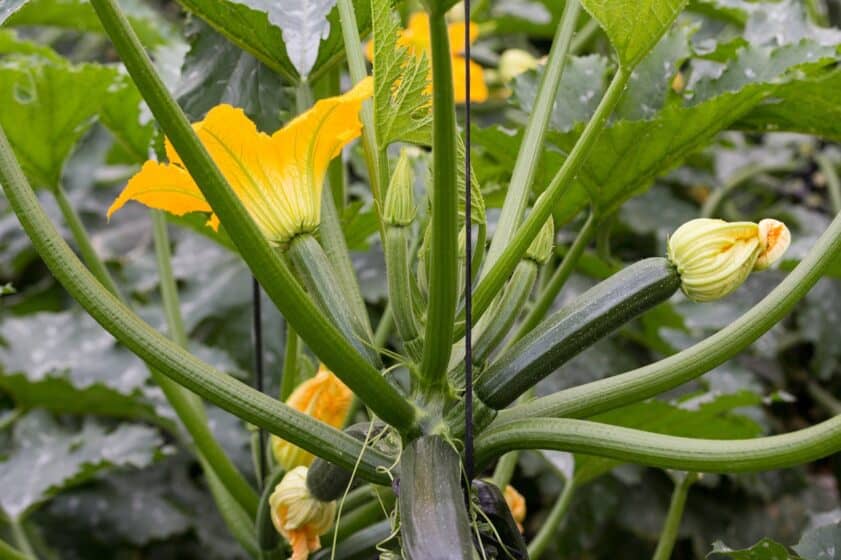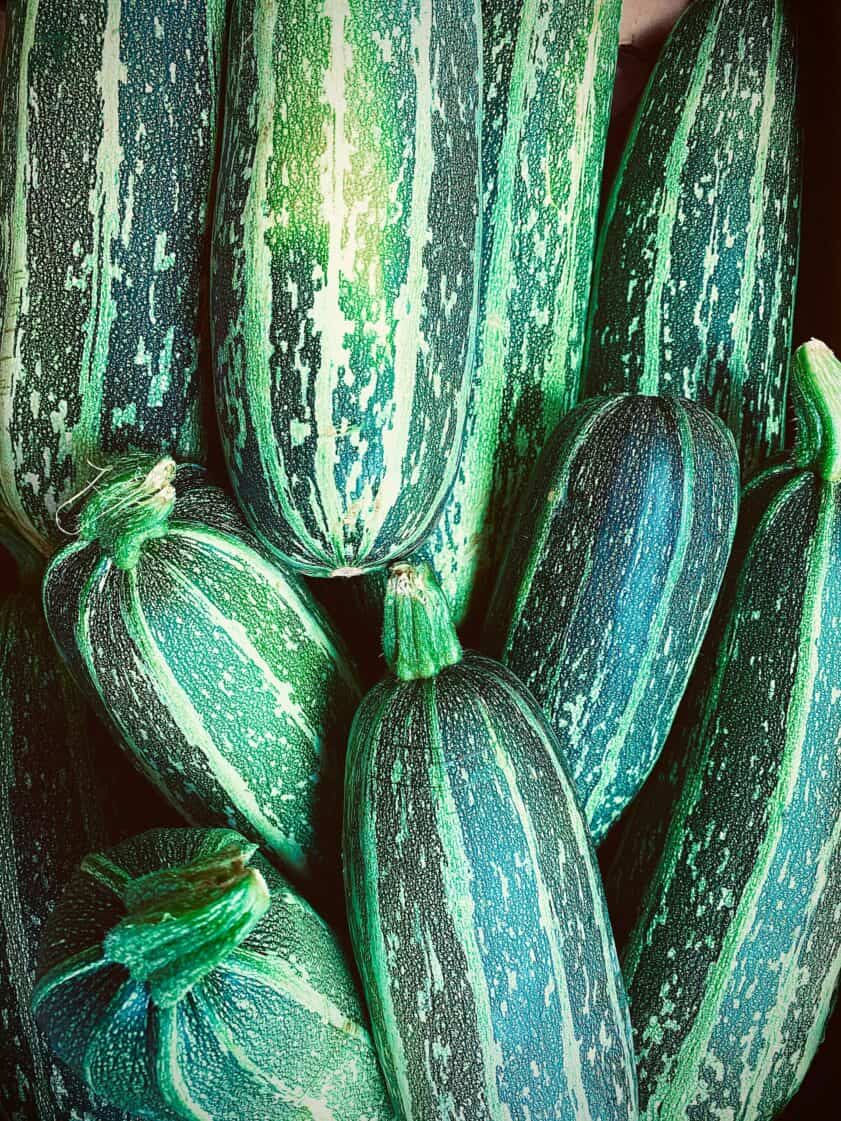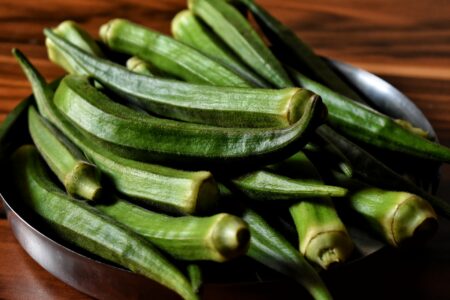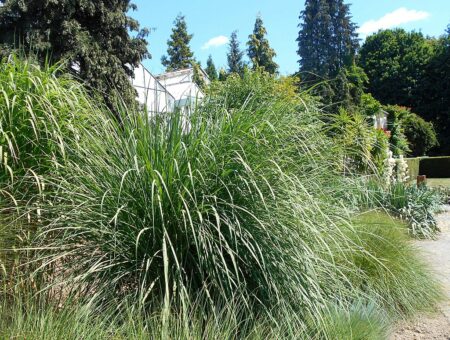Zucchini is a delicious and nutritious summer squash that can be grown in your garden.
It can be planted by seed and grow up to 3 feet (0.9 m) tall.
Additionally, zucchini plants will produce fruit within 45 to 60 days after planting, making them a fast and rewarding crop for gardeners of all skill levels.
This article will guide you through how to grow zucchini and care for your plants to ensure a bountiful harvest.
What Is Zucchini?
Zucchini, also known as courgette, is a summer squash that belongs to the Cucurbitaceae family.
This popular vegetable is native to Central and South America and has been cultivated for thousands of years.
Zucchini is a versatile vegetable that can be enjoyed cooked or raw.
It has a mild, slightly sweet flavor and a tender texture, perfect for various recipes, from soups and stews to salads and sandwiches.
One of the unique characteristics of Zucchini is its shape. It is typically cylindrical, with smooth, dark green skin and creamy white flesh.
Zucchini can range from small, baby zucchini to larger, mature Zucchini that can reach up to three feet (0.9 m) long.
In addition to its delicious flavor, Zucchini is packed with essential nutrients.
It is low in calories and high in fiber, making it an excellent choice for weight management and digestive health.
Zucchini is also rich in vitamins and minerals, including vitamins C, B6, potassium, and manganese.
Zucchini is a versatile vegetable that can be used in various recipes. It’s delicious when sautéed, grilled, or roasted and makes a great addition to casseroles and salads. You can even use it to make zucchini noodles or add it to smoothies for a healthy boost of nutrients.
Choosing and Preparing a Growing Site
Now that you know what Zucchini is, it’s time to choose and prepare a growing site for your plants.
Here’s what you need to do.
Step #1: Select the Right Location
Zucchini plants need plenty of sunlight to thrive, so choosing a sunny location for your garden bed is crucial.
Look for a spot that receives at least 6 to 8 hours of direct sunlight daily.
In addition to sunlight, zucchini plants require well-drained soil rich in organic matter.
Avoid planting your Zucchini in an area that tends to collect water, as this can cause the roots to rot and damage the plant.
Step #2: Prepare the Soil
Before you plant your Zucchini, it’s crucial to prepare the soil by removing any weeds, rocks, or debris from the area.
This will give your plants the best possible start by allowing their roots to penetrate deep into the soil.
Once you’ve cleared the area, it’s time to add some organic matter to the soil. This can be in compost, aged manure, or other organic materials.
Organic matter helps improve soil structure, promote drainage, and provide essential plant nutrients.
Spread a layer of organic matter over the top of the soil and mix it thoroughly with a garden fork or tiller.
Aim to create soil that is loose, crumbly, and well-aerated.
Planting Zucchini

Now that you’ve chosen the perfect location and prepared the soil, it’s time to plant your zucchini seeds.
Here’s what you need to know.
Step #1: Choosing the Right Time To Plant
Zucchini plants are warm-season vegetables, which means they thrive in hot weather.
Wait until the soil has warmed to at least 60°F (15°C) before planting your zucchini seeds.
Depending on your location, this typically happens in late spring or early summer.
You should also consider the expected last frost date in your area.
Planting too early can leave your plants vulnerable to cold temperatures while planting too late can result in a shorter growing season and a smaller harvest.
Step #2: Planting Zucchini Seeds or Seedlings
Plant zucchini seeds about an inch (2.5 cm) deep and 2-3 feet (60-90 cm) apart.
You can also start your seeds indoors 4-6 weeks before your expected planting date, then transplant seedlings to your garden bed when they are about 3-4 inches (7.5-10 cm) tall.
If you’re using seedlings, plant them at the same depth they were growing in their container and space them 2-3 feet (60-90 cm) apart.
Proper spacing is essential to ensure adequate air circulation and prevent overcrowding, which can lead to disease.
Step #3: Providing Support Structures
You can provide support structures for your plants if you’re growing a vining variety of zucchini, such as tromboncino or cocozelle.
This can include trellises, cages, or stakes.
Support structures help keep your plants upright and off the ground, improving air circulation and preventing disease.
They also make it easier to harvest your Zucchini and can increase your yield.
Watering and Fertilizing Zucchini
Watering is an essential aspect of growing healthy zucchini plants. These plants require consistent moisture levels in the soil to thrive.
When watering zucchini plants, ensure the water penetrates deeply into the soil.
Follow these tips about watering your zucchini plants:
- To maintain consistent moisture levels in the soil, water your zucchini plants deeply and regularly.
- Water your plants once or twice a week, depending on the weather conditions in your area.
- Avoid overwatering your zucchini plants, which can lead to fungal diseases.
Fertilizing is also crucial for the growth and fruit production of zucchini plants. Use a balanced fertilizer to provide essential nutrients to the plants.
Follow these tips about fertilizing your zucchini plants:
- Apply a balanced fertilizer at the base of the plants every 2-3 weeks.
- Use a fertilizer with equal nitrogen, phosphorus, and potassium (N-P-K).
- Avoid over-fertilizing your zucchini plants, leading to excessive foliage growth and reduced fruit production.
Harvesting and Storing Zucchini

Once your zucchini plants start producing fruit, it’s important to harvest them at the right time to ensure they’re at their best.
Here’s what you need to know about harvesting and storing zucchini.
Harvesting Zucchini
Depending on the variety, Zucchini is ready to harvest when it’s about 6-8 inches (15-20 cm) long.
It can become tough and woody if left on the plant for too long. To harvest, cut the fruit from the plant using a sharp knife or pruning shears.
Be careful not to damage the stem or other nearby fruits.
Storing Zucchini
Freshly picked Zucchini can be stored in a cool, dry place for up to a week.
If you need to store it longer, place it in a plastic bag in the refrigerator’s crisper drawer for up to two weeks.
Possible Problems When Growing Zucchini
Even the most seasoned gardeners can face challenges when growing zucchini. Here are some potential problems to watch out for.
Pest Infestations
Pests like squash bugs and cucumber beetles can be a significant problem for zucchini plants.
Watch for these pests and use insecticidal soap or neem oil to control them.
Disease
Zucchini plants can be susceptible to various diseases, such as powdery mildew, bacterial wilt, and mosaic virus.
Choose disease-resistant varieties and practice crop rotation to prevent disease buildup in the soil.
Overwatering
Although zucchini plants require consistent moisture, overwatering can lead to root rot and other fungal diseases.
Allow the soil to dry out slightly before watering again.
Lack of Pollination
Without proper pollination, zucchini plants may produce few or misshapen fruits.
Encourage pollinators like bees by planting flowers nearby and hand-pollinate if necessary.
Conclusion
Zucchini will always reward your hard work with a bountiful harvest.
One essential thing to remember when planting Zucchini is to give them space to breathe!
Just like us, zucchini plants need adequate air circulation to thrive. So, space them out properly to avoid overcrowding and promote healthy growth.
Your zucchinis will thank you for the breathing room!
















